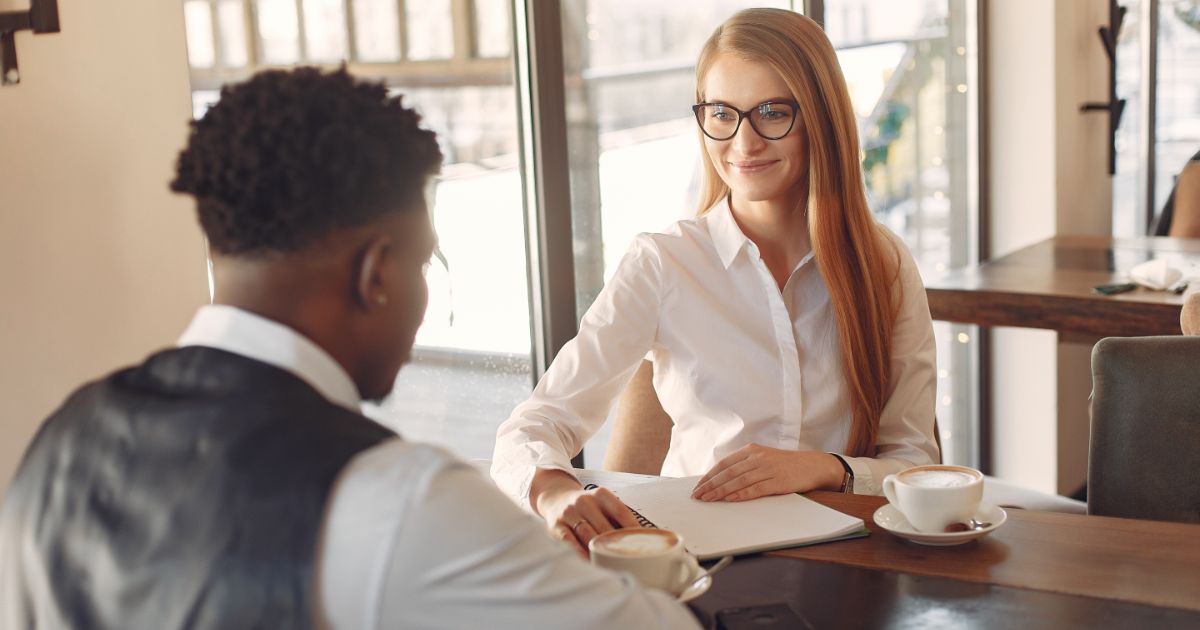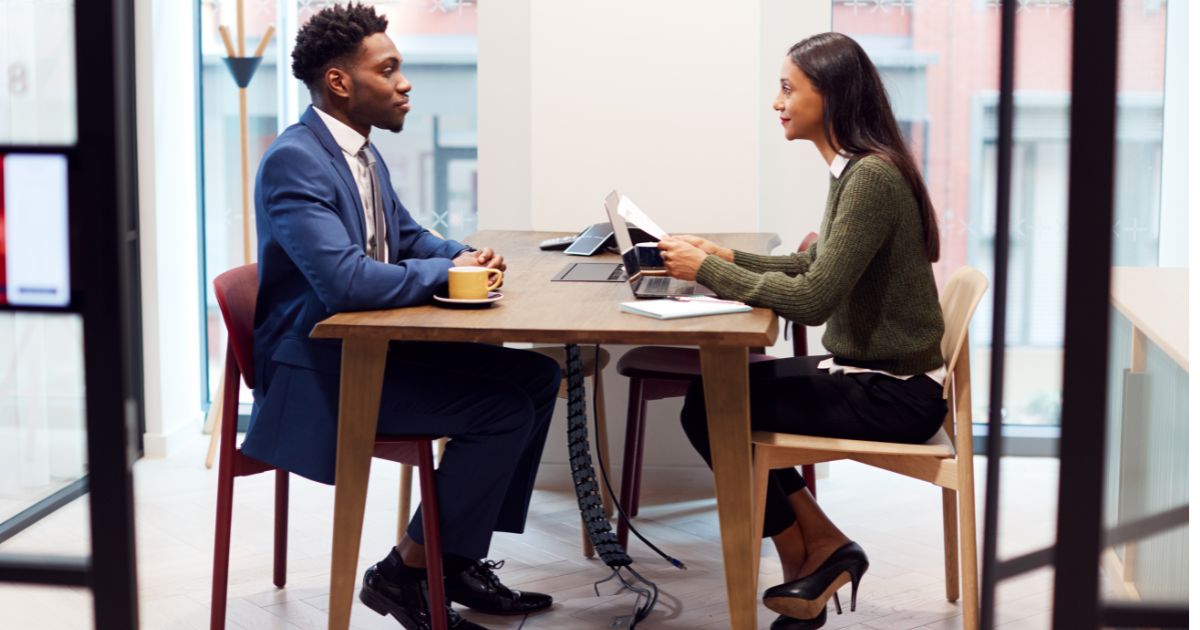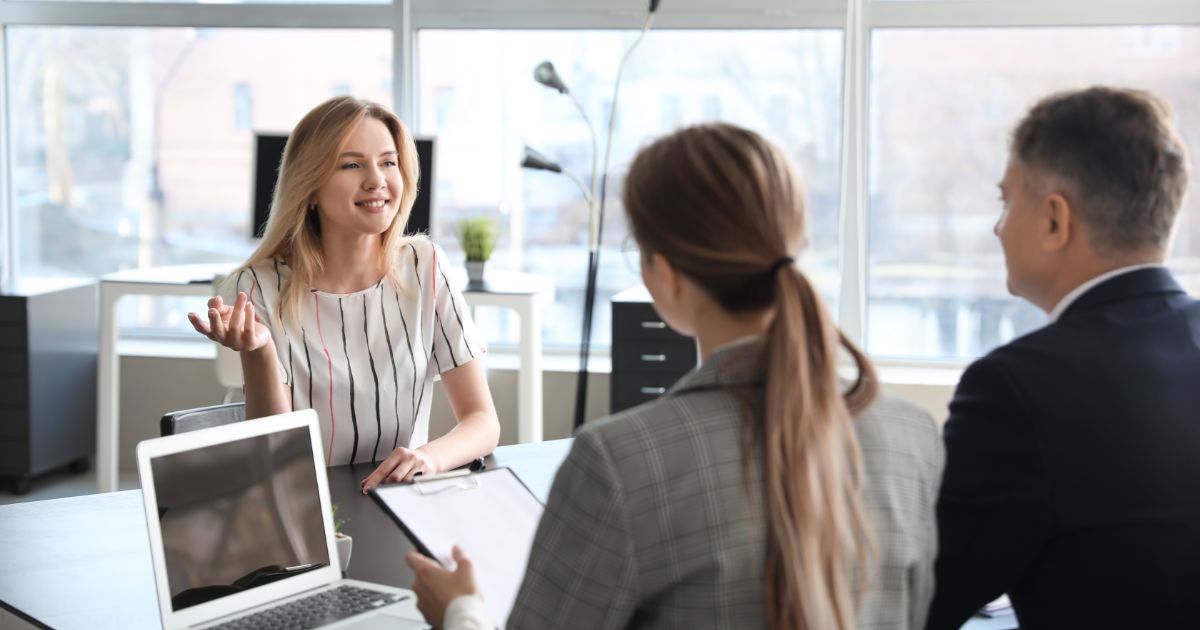Top 9 Design Interview Questions and Detail Answers
The design interview can be a nerve-wracking experience, but with the right preparation, you can transform it into an opportunity to showcase your skills and land your dream job. Understanding the common questions and how to answer them effectively can make a significant difference in your confidence and performance.
This article delves into the top 9 design interview questions and provides comprehensive answers to help you navigate your next design interview with ease and success. With the knowledge and preparation provided here, you'll be ready to conquer your design interview and follow your dream design position.
Question 1: Where do you find inspiration for your designs?

Mention Diverse Sources: Emphasize your draw inspiration from a wide range of sources such as nature, art, architecture, everyday life, and cultural trends.
Broad Design Perspective: Explain how this diverse range of inspiration helps you maintain a broad and dynamic design perspective, allowing you to incorporate various elements into your work.
Not Just Copying: Stress that it’s not about copying what you see but using these inspirations as a starting point to create something unique and innovative.
Impact on Design Process: Explain how this inspiration influenced your design process and the outcome of the project. Highlight the practical steps you took to incorporate the inspiration into your work and the positive results it yielded.
"I find inspiration for my designs from various sources, which bring me a unique and fresh perspective to each project. One of my primary sources of inspiration is nature. The organic shapes, colors, and patterns in the natural world often spark new ideas and supply a beautiful, timeless aesthetic that I like to incorporate into my designs.
Additionally, I stay updated with the latest trends by following design blogs, attending industry conferences, and reading design magazines. I also draw a lot of inspiration from art and architecture. Visiting museums and historical sites gives me a deeper appreciation for different styles and eras, which I can translate into my work.
Moreover, I find everyday life to be a rich source of inspiration. Simple things like the layout of a café, street art, or even the way light filters through a window can trigger creative ideas. I believe that being observant and curious about the world around us is weighty for any designer.
Lastly, I value collaboration and feedback from others. Engaging with other designers, clients, and even users helps me see different perspectives and often leads to innovative solutions that I wouldn’t have thought of on my own."
Question 2: Can you describe a project where you had complete creative freedom? How did you approach it?
Start by briefly describing the project, including its context and objectives. You should mention who the client was and what the end goal of the project was. Clearly state that you had complete creative freedom and what that entailed for the project. Explain how this freedom allowed you to explore innovative ideas and approaches without constraints. Highlighting this aspect shows your ability to manage and thrive in situations where you have full control over the creative direction.
"One project that stands out where I had complete creative freedom was when I was tasked with designing a new brand identity for a local boutique coffee shop. The owners wanted a distinctive, memorable brand that reflected their unique blend of artisanal coffee and cozy ambiance, but they gave me the freedom to interpret and create as I saw fit.
I started by having an in-depth discussion with the owners to understand their vision, values, and target audience. This initial step was significant for my creative direction aligned with their brand’s essence.
Next, I conducted extensive research on current design trends in the coffee industry, as well as broader design inspirations from various sources like nature, architecture, and art. I also visited the coffee shop several times to immerse myself in its atmosphere and get a feel for its unique vibe.
I began sketching multiple concepts, creating a logo and color palette that evoked warmth, sophistication, and a sense of community. I played with different typography styles and graphic elements that could represent both the artisanal and modern aspects of the brand.
With several concepts in hand, I created digital drafts and mockups. Although I had creative freedom, I valued feedback and presented these drafts to the owners for their input. Their feedback refined the designs, which resonated with their vision.
After several rounds of iteration, I finalized the brand identity, which included the logo, color palette, typography, and additional branding elements like packaging and in-store signage. The final design was well-received and successfully captured the essence of the coffee shop, leading to increased customer engagement and brand recognition."
Question 3: How do you approach a new project? What are the first steps you take?

You should start with an in-depth discussion with the client or stakeholders. It's momentous to understand their vision, goals, and expectations. During this initial phase, you should ask questions about the target audience, project objectives, and any specific requirements or constraints. This understanding will set the foundation for the entire project.
"When approaching a new project, I follow a structured process to ensure thorough understanding and successful execution.
The first step is to fully understand the project scope. I discuss the project with the client or stakeholders to grasp their vision, goals, and expectations. I always ask questions about the target audience, project objectives, and any specific requirements or constraints.”
Question 4: Describe a time when you had to pivot or change your design approach mid-project. What prompted the change and how did you handle it?
This question opens up opportunities to showcase your adaptability, problem-solving skills, and effective communication.
You need to set the context for the project. Explain briefly what the project was about, your role in it, and the initial design approach you had planned.
Then, you describe the factors that necessitated a change in your design approach. It could be based on new user feedback, a shift in business goals, technological constraints, or any other significant developments that impacted the project.
Finally, you detail the steps you took to pivot the design approach. Highlight your problem-solving skills, how you collaborated with your team, and how you communicated with stakeholders.
“During a project for a retail client's website redesign, we had initially planned to create a sleek, minimalist design that focused on high-quality product images and a streamlined user experience. However, midway through the project, the client conducted new market research and found that their target audience highly valued community interaction and wanted more engagement opportunities on the website. This new insight required us to pivot from our initial design strategy to better align with the client's updated business goals.
So, these are how I handled it. I immediately scheduled a meeting with the client and my team to fully understand the new direction and objectives. Clear and open communication keeps everyone on the same page and addresses any concerns or questions.
We quickly developed new prototypes and wireframes to reflect the updated design direction. These included interactive elements and community-focused features. I presented these prototypes to the client for feedback to make sure we were moving in the right direction.
We established an iterative feedback loop from the client involving regular check-ins and reviews. Based on that, we make continuous improvements and adjustments based on the client's input, always towards the goal that the final design meets their expectations.
The new design was well-received by the target audience, leading to increased user engagement and positive feedback. The client was pleased with our ability to adapt quickly and deliver a product that exceeded their expectations.”
Question 5: Which design tools and software are you most comfortable using? Can you give an example of a project where you used these tools?

It's important to highlight your technical skills and familiarity with industry-standard tools, then provide a relevant example that showcases your expertise.
“I am most comfortable using design tools such as Adobe Creative Suite (including Photoshop, Illustrator, and InDesign), Figma, and Sketch for UI/UX design. Additionally, I have experience with prototyping tools like InVision and Adobe XD, as well as collaboration tools like Miro for brainstorming and wireframing.
One project where I extensively used these tools was the redesign of an e-commerce website for a mid-sized retail company. The project aimed to improve user experience and increase online sales. Here’s how I utilized these tools:
Adobe Photoshop and Illustrator: I used these tools to create high-fidelity visual elements and graphics. Photoshop was particularly useful for editing product images to create high-quality and visually appealing. Illustrator helped in creating vector graphics and icons that were scalable and consistent across the site.
Figma: Figma was necessary for the UI/UX design process. I created interactive prototypes that showed stakeholders how to visualize and interact with the new design before development. Figma’s real-time collaboration features enabled me to work closely with the development team and receive instant feedback from stakeholders, which streamlined the iterative design process.
InVision: I used InVision for advanced prototyping and user testing. This tool allowed us to create clickable prototypes that simulated the final product, making it easier to conduct usability testing with real users. The feedback from these sessions was invaluable in refining the design and building a user-friendly experience.
Miro: During the initial stages of the project, Miro was instrumental in brainstorming and wireframing. It supplied a collaborative space where the team could gather ideas, create wireframes, and map out user flows.
As a result of using these tools effectively, we were able to create a user-centered design that significantly improved the website’s usability and aesthetics. Post-launch analytics showed a 25% increase in the average session duration and a 15% increase in the conversion rate, indicating that the redesign successfully enhanced the overall user experience and achieved our project goals.”
Question 6: Can you describe a challenging design problem you faced and how you resolved it?
You should offer some background information about the project, your role, and the specific challenge you encountered. You describe the specific problem in detail. Explain why it was challenging and what obstacles you faced.
“One challenging design problem I faced was during the development of a mobile app for a health and wellness startup. The primary issue was creating an intuitive and engaging user interface that accommodated a wide range of user demographics, from tech-savvy young adults to less tech-savvy older adults, without compromising on the app’s functionality or aesthetic appeal.
The client wanted a sleek, modern design, but initial user testing revealed that older users found the app confusing and difficult to navigate. This was a significant challenge because the app needed to appeal to a broad audience while continuing ease of use for all age groups.
My task was to redesign the user interface to be more inclusive and user-friendly, especially for the older demographic, while maintaining the modern look and feel that the client desired.
I conducted extensive user research, including interviews and usability testing sessions with a diverse group of users.
Based on the feedback, I simplified the navigation structure by reducing the number of steps required to access key features. I used larger, more readable fonts and increased the contrast between text and background to improve readability.
I created low-fidelity wireframes and interactive prototypes using Figma. These prototypes were tested with real users from both younger and older demographics. Iterative testing allowed me to make adjustments based on user feedback continuously.
The changes led to a 30% increase in user retention among older adults and a 20% overall increase in user satisfaction ratings. The app's success was highlighted by an uptick in positive reviews and increased user engagement across all age groups.”
Question 7: Describe a time when you had to collaborate with other designers, developers, or stakeholders on a project. How did you ensure effective communication and teamwork?

First, you should mention the goal of the project, your role, and the team members you collaborated with. The important part is to detail the strategies and tools you used to ensure effective communication and teamwork. Highlight how you managed to keep everyone on the same page and resolve any conflicts or misunderstandings.
“One notable instance of collaboration was when I worked on the development of a new feature for a customer relationship management (CRM) system at my previous job. The project needed close cooperation between designers, developers, and stakeholders.
The task was to develop a customizable dashboard feature that would permit users to personalize their CRM interface with widgets and data visualizations relevant to their roles. This required input from various teams to balance design, functionality, and user experience.
My role was to lead the design team and act as a liaison between the designers, developers, and stakeholders to make sure everyone was aligned and working towards the same goal.
We started with a series of kickoff meetings where all parties came together to discuss the project goals, requirements, and expectations. It set a clear direction, and everyone was on the same page from the start.
To maintain clear and consistent communication, we held daily stand-up meetings and weekly progress updates. These meetings facilitated us to address any roadblocks, discuss progress, and make quick decisions. Tools like Slack and Microsoft Teams help to advance real-time communication and file sharing.
We used collaborative tools such as Figma for design and InVision for prototyping. These tools brought benefits for designers and developers to work together seamlessly, providing a platform for feedback and iteration in real time. Stakeholders could also view prototypes and feedback directly within these tools.
Inevitably, there were times when conflicting opinions arose. In such cases, I promoted discussions to understand each perspective, encouraged open dialogue, and worked towards finding a compromise that aligned with the project goals.
Finally, the project also fostered a stronger collaborative culture within the team, improving our overall workflow for future projects.”
Question 8: How do you handle creative blocks or periods when you feel less inspired?
You should show self-awareness and normalize the challenge. The best thing you need to do is to explain how taking breaks helps clear your mind and provide a fresh perspective. Describe the types of activities you engage in during these breaks.
“In one project, I was tasked with designing a new user interface for an e-commerce platform. I hit a creative block when trying to create a unique yet functional layout that catered to both desktop and mobile users. To overcome this, I took a break and then sought inspiration from various e-commerce websites and design galleries. I also scheduled a brainstorming session with my team, where we discussed different user interface trends and shared ideas.
Additionally, I experimented with different layout structures and user flows, allowing myself the freedom to explore unconventional designs. I also reviewed user feedback from previous designs to understand their pain points better. This combination of seeking inspiration, collaboration, and experimentation aided me overcome the creative block, resulting in a design that was both innovative and user-friendly.”
Question 9: How do you handle feedback and criticism of your designs?

Let's explain how you actively listen to feedback and criticism without becoming defensive. Highlight the importance of understanding the perspective of the person providing the feedback.
It's important to describe how you embrace constructive criticism as an opportunity for growth. You can emphasize your mindset and attitude towards improving your designs based on feedback.
"Feedback and criticism are integral parts of the design process. I view them as opportunities for growth and improvement rather than as a negative commentary on my skills or creativity.
When receiving feedback, I make a conscious effort to listen actively and without defensiveness. I understand that the person providing the feedback has a unique perspective and valuable insights that can enhance the design. I focus on understanding their viewpoint and the specific issues they are raising.
I ask clarifying questions so I can fully understand the feedback. Gaining a clear understanding of the feedback gives me the ability to create informed decisions on how to improve the design."
Conclusion
Preparing for a design interview is more than just showcasing your portfolio; it's about demonstrating your ability to think critically, solve problems creatively, and communicate effectively. Remember, preparation is key. Research the company and the specific role you're applying for. Practice your answers beforehand and tailor them to the interview context. Let's highlight your unique experiences, stay confident, and remain open to feedback. With thorough preparation and a clear understanding of what interviewers are looking for, you'll be well-equipped to make a lasting impression and take the next step in your design career. Good luck!
If you want to be well on your way to leaving a lasting impression on the interviewer and launching a successful career in design, don't hesitate to sign up for Skilltrans courses now!

Meet Hoang Duyen, an experienced SEO Specialist with a proven track record in driving organic growth and boosting online visibility. She has honed her skills in keyword research, on-page optimization, and technical SEO. Her expertise lies in crafting data-driven strategies that not only improve search engine rankings but also deliver tangible results for businesses.



